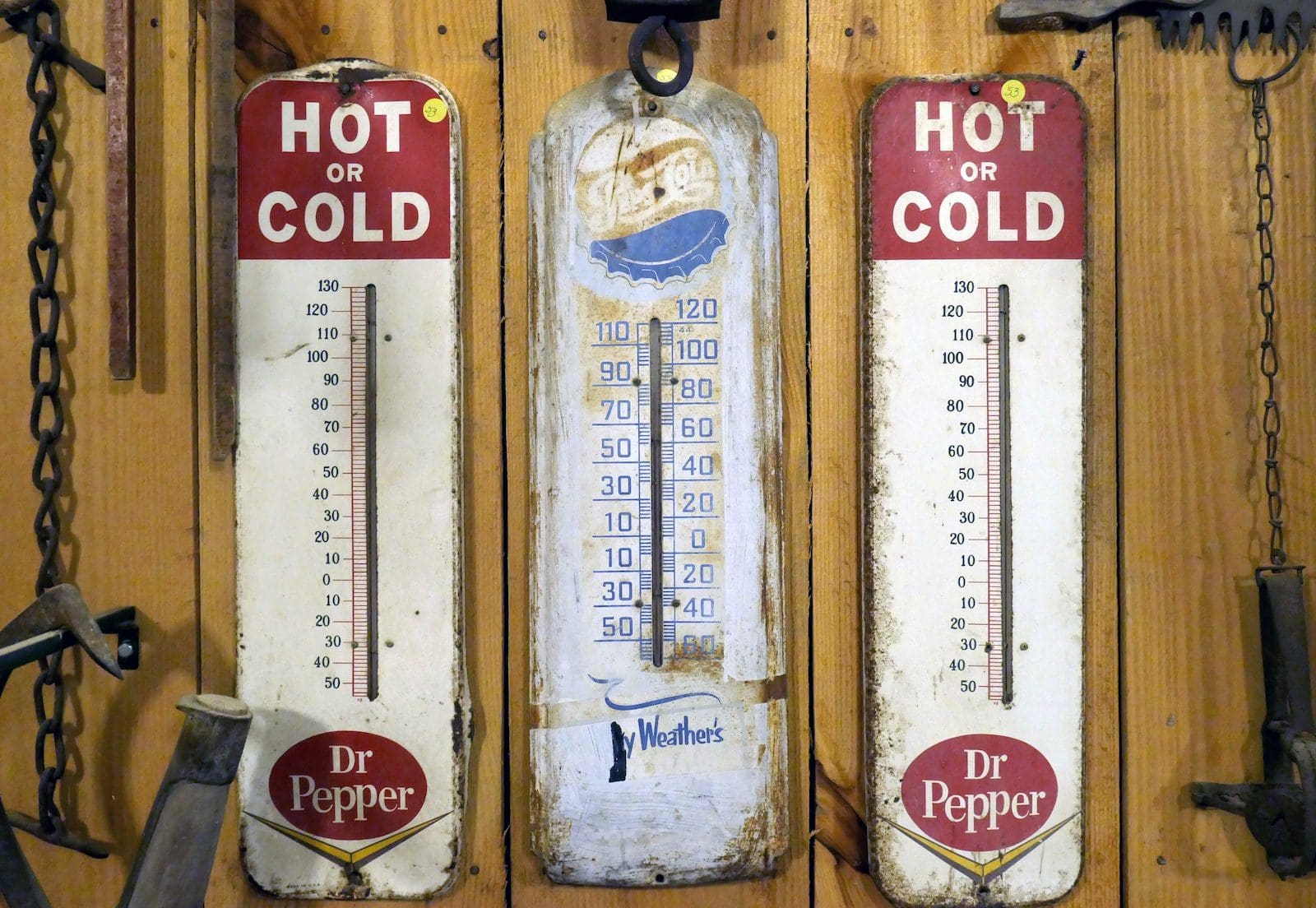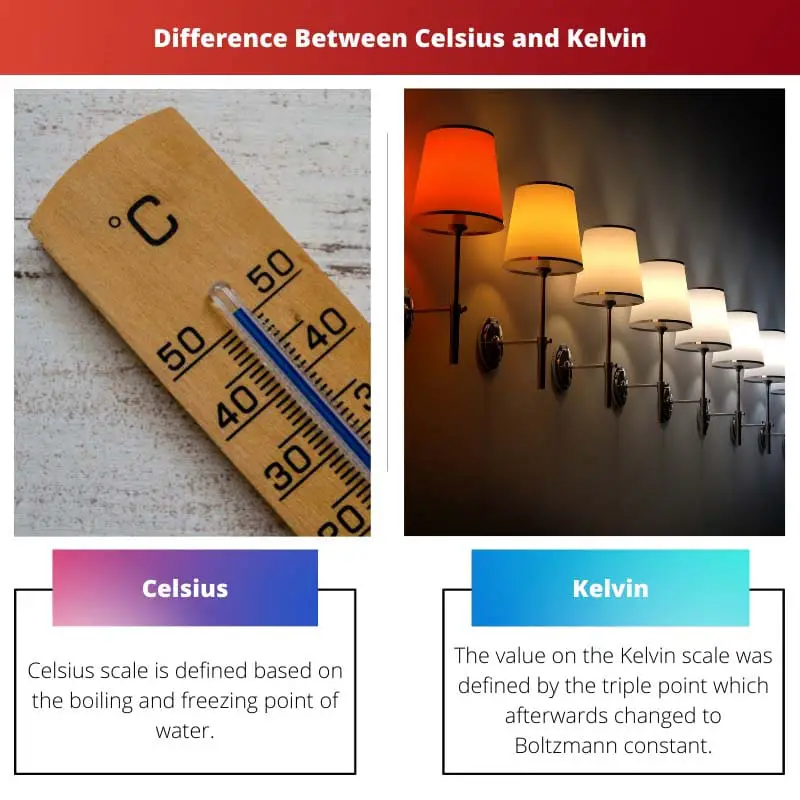Celsius and Kelvin are both used as units for the measurement of temperature. They are represented by two different symbols, oC for Celsius and K for Kelvin.
Both of these are used at different places, and most of the time, Celsius is used for general purposes and simple calculations, and Kelvin is used in more scientific problems.
Key Takeaways
- Celsius is a temperature scale based on the freezing and boiling points of water, while Kelvin is an absolute temperature scale based on the motion of particles.
- Celsius has 100 degrees between water’s freezing and boiling points, while Kelvin starts at absolute zero, where all particles have zero motion.
- Celsius is used for everyday temperature measurements, while Kelvin is used in scientific and engineering applications.
Celsius vs Kelvin
Celsius is a measure of temperature that is fully called the Celsius scale or Centigrade scale and gives the temperature in the form of difference from a reference point. Kelvin is the SI unit of temperature that is represented by K, and the scale is defined by the triple point or Boltzmann constant.

The Celsius scale represented by the unit degree Celsius (oC) is a measure of the difference between two temperatures. In simpler words, it is a range of temperature on the centigrade scale.
The basis of the scale is taken by the boiling and freezing point of the water that is 100oC and 0oC respectively.
The Kelvin scale was developed by William Thomson, 1st Baron Kelvin after whom the scale was named and the symbol was taken as K. 1.380649×10−23J change in thermal energy is brought by some thermodynamic temperature difference which is known as one Kelvin.
Kelvin is taken as the SI unit of temperature.
Comparison Table
| Parameters of Comparison | Celsius | Kelvin |
|---|---|---|
| Definition of the terms | Celsius scale is defined based on the boiling and freezing point of water | The value on the Kelvin scale was defined by the triple point which afterwards changed to Boltzmann constant. |
| Symbols Used | It is represented by the use of oC or simply o is also used to report the temperature in Celsius | It is represented by the symbol K and the symbol degree is not used unlike in all other units. |
| Difference in points | The freezing and boiling points of water are reported as 0oC and 100oC. | The freezing and boiling points of water are reported as 273 K and 373 K. |
| Molecular Motion | It does not consider the molecular motions of the particle during the measurement. | It considers the aspect of molecular motion while reporting as it works on the formula of kT |
| Usage of the units | Mostly this scale is used daily for reporting the temperature where an exact digit is not required | This scale is used in most of the scientific formulae and calculations due to it being more precise. |
| Examples | Most of the time the temperature of the human body is represented on the Celsius scale | In scientific calculations like that of kinetic energy where the temperature has to be related to the inside matter |
What is Celsius?
The centigrade scale is a measure of temperature that gives the temperature in the form of a difference from a reference point. It is represented by the symbol oC and is commonly called the Celsius scale.
It is based on the boiling and freezing point of water, that is 0oC and 100oC and is also related to pressure as the data above is at 1 atm pressure.
The scale was named after the Swedish astronomer Anders Celsius who had replaced the previously used Centigrade scale, which was named after a Latin combination of words. The words Centum and Gradus meant hundred and steps, respectively.
After some time, the scale was redefined by the use of new parameters known as absolute zero which means a temperature at which entropy and enthalpy are maximum and triple point which is the temperature where three states coexist as they were taken as absolute water standards.
Centigrade was used as an informal way of saying degree Celsius.
The above definition made it easy for the scientists to correlate the two scales, Celsius and Kelvin. The absolute zero was reported as 273.15K and 0.01oC, proving that the change in one unit was equal for both.

What is Kelvin?
Kelvin is represented by K and taken as the SI unit of temperature due to its definition being more accurate and precise. The scale is named after its developer William Thomson, 1st Baron Kelvin, who is a Physicist and Engineer born in Belfast.
He wanted to provide a scale that could serve as the absolute thermodynamic scale.
It is defined as the temperature change that is brought by the 1.380649×10−23J change in thermal energy.
It was defined based on the Boltzmann constant after the rejection of the definition related to the triple point. Earlier, it was defined as 1/273.15 of the triple point of water of thermodynamic temperature.
The scale was developed by Lord Kelvin because he wanted a scale that would start at the infinite cold or the absolute zero, and for that, he conducted a series of experiments.
He also wanted the scale to be in conjugation with the Celsius scale, which means the unit increase should be the same.
He calculated the absolute zero, which was -273oC, and was a negative reciprocal of 0.00366, which was the accepted coefficient of gas expansion in reference to ice point for a degree change in temperature. Therefore, the number was of this significance.
[K]=[oC]+273

Main Differences Between Celsius and Kelvin
- The Celsius scale was defined on the basis of the boiling and freezing point of water at a specific temperature, whereas the Kelvin scale was based on the triple point of water, which eventually was described by the use of the Boltzmann constant.
- The Celsius scale is represented by the use of degree Celsius symbolised as oC, and the Kelvin scale is represented by the use of the symbol K and the degree symbol is not used, unlike most of the units.
- There is a difference between the boiling and freezing points of water on both scales. On the Celsius scale, it is 0oC and 100oC, whereas on the Kelvin scale, it is 273 K and 373 K.
- The Celsius scale neglects the temperature difference due to the presence of the molecular particle. On the other hand, due to being defined by the use of the Boltzmann constant, the Kelvin scale keeps the molecular changes in consideration.
- The Celsius scale is used in daily life to tell the temperature of the body or weather, whereas the Kelvin scale is used more in scientific calculations and formulae.





